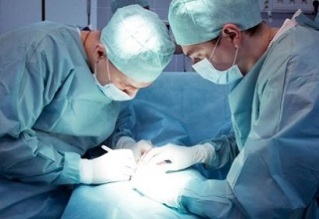
The surgical method of thickening the penis by skin and fat transplantation is a response to the short-lived effect of subcutaneous filling. If we compare this method of penis enlargement with the insertion of fat cells, then it requires great professional skills.
Thickening of the penis with skin and fat means a more complex intervention, as well as a high risk of injury. Therefore, before performing the operation, the patient should weigh the pros and cons.
Penis enlargement by skin and fat transplantation
The duration of the operation under consideration, performed under general anesthesia, is several hours. It all starts with collecting transplants. Most often, they are transplanted from the gluteal region of the patient, as this subcutaneous layer is characterized by a higher density and number of connective tissue septa. You can also use leather caps and fat taken from the hip area.
The area of the material obtained depends directly on the size of the male genital organ. As a result, the surgeon may not be limited to just one implant. After suturing the defective areas of the donor area, incisions are made in the shaft of the penis. The skin and fat flaps are inserted by a specialist under the upper layers of the phallus skin. When the transplant process is complete, the surgeon sutures the incisions.
As already mentioned, donor skin and fat are most often taken from the gluteal region. This material boasts a lower fat content, so it does not lose as much density during the transplant process. The adipose tissue cells of the gluteal flaps in the lowering process experience trunk pressure, therefore, they have a denser structure.
What are the indications and contraindications

An unsatisfactory thickness of the penis can lead to serious psychological problems. This can have a negative impact on both a man's self-esteem and his success in intimate life. As a result, the indications for surgery are of a medical, psychological and aesthetic nature.
In terms of contraindications, a man will have to undergo an examination before performing surgery to thicken the penis. Surgical intervention will be controversial if the patient is experiencing mental, genitourinary, cardiovascular, or immune problems.
It is important to pay attention to the ability of the blood to clot, as well as to make sure that there is no damage to the skin of the penis and the donor area (gluteal, groin). The list of contraindications is supplemented by diabetes mellitus and inflammatory processes.
Rehabilitation period and results
On the one hand, skin and fat transplants can achieve a longer effect than filling, but on the other hand, epidermis-free implants can be rejected, as there is an inadequate blood supply to the material used. Risks of changing the contours of the penis trunk due to the uneven density of natural grafts should not be ruled out.
Given the high risks of rejection of skin and fat blocks and the emergence of inflammatory processes, specialists are increasingly discouraging patients from such a surgical intervention, recommending a procedure with muscle transplantation.

Such an operation allows accurate preservation of the blood supply to the grafts, and also guarantees a thickening of the penis for life.
Advantages and disadvantages of using oily skin flaps include the following:
- , unlike fat filling, a more consistent result is observed;
- despite the signs, aesthetics are preserved in the donor area;
- the material used loses its minimum density.
Disadvantages:
- the financial side of the issue;
- risks of skin and fat rejection;
- probability of phallus trunk deformation;
- risk of postoperative wound pus.














































